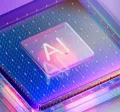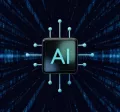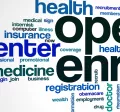
Evaluating Rewards and Recognition Programs: the Key to Optimization
February 8, 2024
Some organizations recognize team members when they reach five or ten-year service milestones, others reward star sales performers, and still others celebrate retirements for valued employees. But few companies have all their bases covered simultaneously, or let alone know what all the bases are, to cover them! The good news is that leaders and managers know that rewards and recognition programs increase employee engagement, which boosts a variety of outcomes including business performance and employee satisfaction.
Strategic Evaluation Provides Direction
So, how do you make sure your rewards and recognition program is running optimally, and your company is achieving the best possible outcomes? Enter Inspirus' Employee Recognition Scorecard. It’s a quick assessment that leverages our deep bench of industry experts and experience in the rewards and recognition space. When we saw a need to help HR managers and leadership objectively and consistently evaluate their own programs, we immediately dove into development. The Employee Recognition Scorecard empowers users to:
- View their program holistically as a whole, not just in parts
- Expose gaps in their program components – see what areas are working well and what areas are not, and generate new employee recognition ideas
- Drive program optimization in the areas that are falling short
- Have a baseline from which to measure program growth over time
Three Levels of Programs
The free assessment tool plots the maturity of a rewards and recognition program, placing them in one of three progressive levels:
Informal programs
- are in the infancy stage, are disconnected and generally lack true understanding of how rewards and recognition delivers value
Developing programs
- are found in companies who are beginning to understand the value of a program, but are having trouble ‘connecting the dots’ as they try to do it all themselves
Performing programs
- are found in organizations that have a strong commitment to rewards and recognition, but gaps still exist in some areas
By determining their program level, organizations can see which areas of their rewards and recognition program require attention and then take action to level up. As programs mature, positive business outcomes like productivity employee retention, and profitability increase. And, employee engagement rises through improved satisfaction, increased instances of peer to peer recognition, and reduced turnover.
Employee Recognition Drives Business Success
Gone are the days when employee recognition was as simple as recognizing an employee of the month, purchasing gift cards, or using treats to say thank you. Rewards and recognition programs today are more robust, but often still underdeveloped in their structure, management and delivery. Programs that reach the highest level of success integrate rewards and recognition into their organizations business strategy making employees feel positively impacted by highlighting their high performance. The proof? A Deloitte study found that frequent recognition can improve employee engagement, productivity, and performance by 14% - and a 15% increase in engagement can result in a 2% increase in margins.
Our self-guided survey takes less than 5 minutes to complete. A free assessment will then be delivered to you via email, revealing your program's score. The program assessment will arm you with powerful, objective information about your rewards and recognition program, giving you the insight and confidence to make smarter business decisions and ultimately motivate employees. Of course, if you need help planning what actions to take as your next steps, contact us today.




